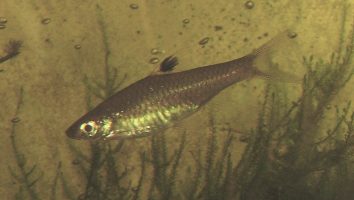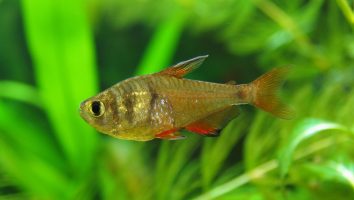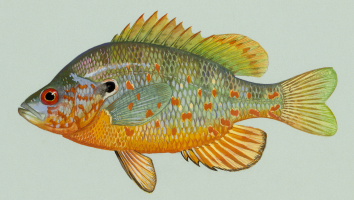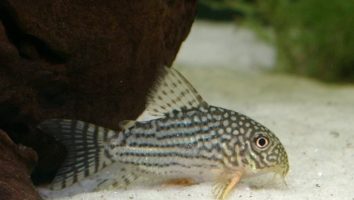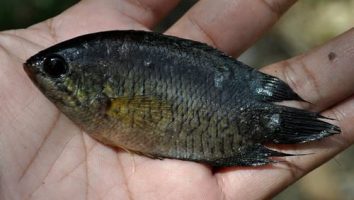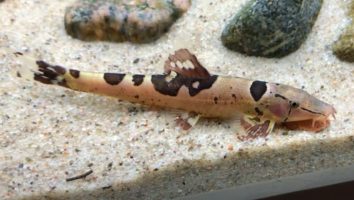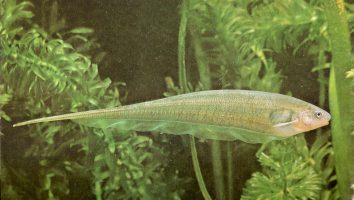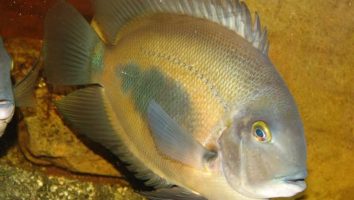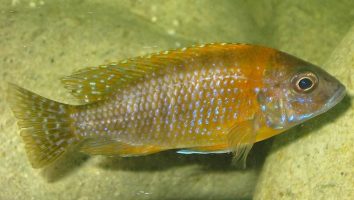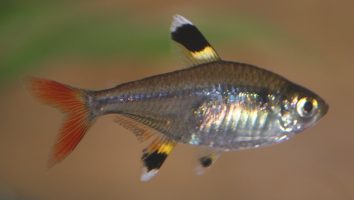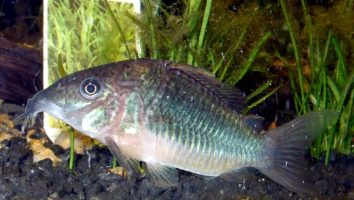The redtail loach is a beautiful freshwater fish that is native to Southeast Asia. They are a popular choice for aquariums because of their vibrant coloration and peaceful nature.
Despite their popularity, there is still a lot of misinformation out there about their care. In this guide, we will dispel some of the myths about redtail loach care and provide you with everything you need to know to keep them healthy and happy.
Table of contents
Species overview
Redtail loaches (Noemacheilus barbatulus) are a freshwater fish that is found throughout a large portion of Southeast Asia. Their geographical range extends from Pakistan all the way to Vietnam.
Redtail loaches are bottom dwellers and prefer to live in slow-moving water with plenty of hiding places. This could be in the form of plants, driftwood, or rocks.
They are a nocturnal fish, which means they will be the most active at night. During the day, they may hide away in some of their chosen hiding spots.
Redtail loaches are very popular in the aquarium scene because of their unique appearance and their peaceful nature. They are compatible with a wide variety of other fish, making them a great addition to most community tanks.
Appearance
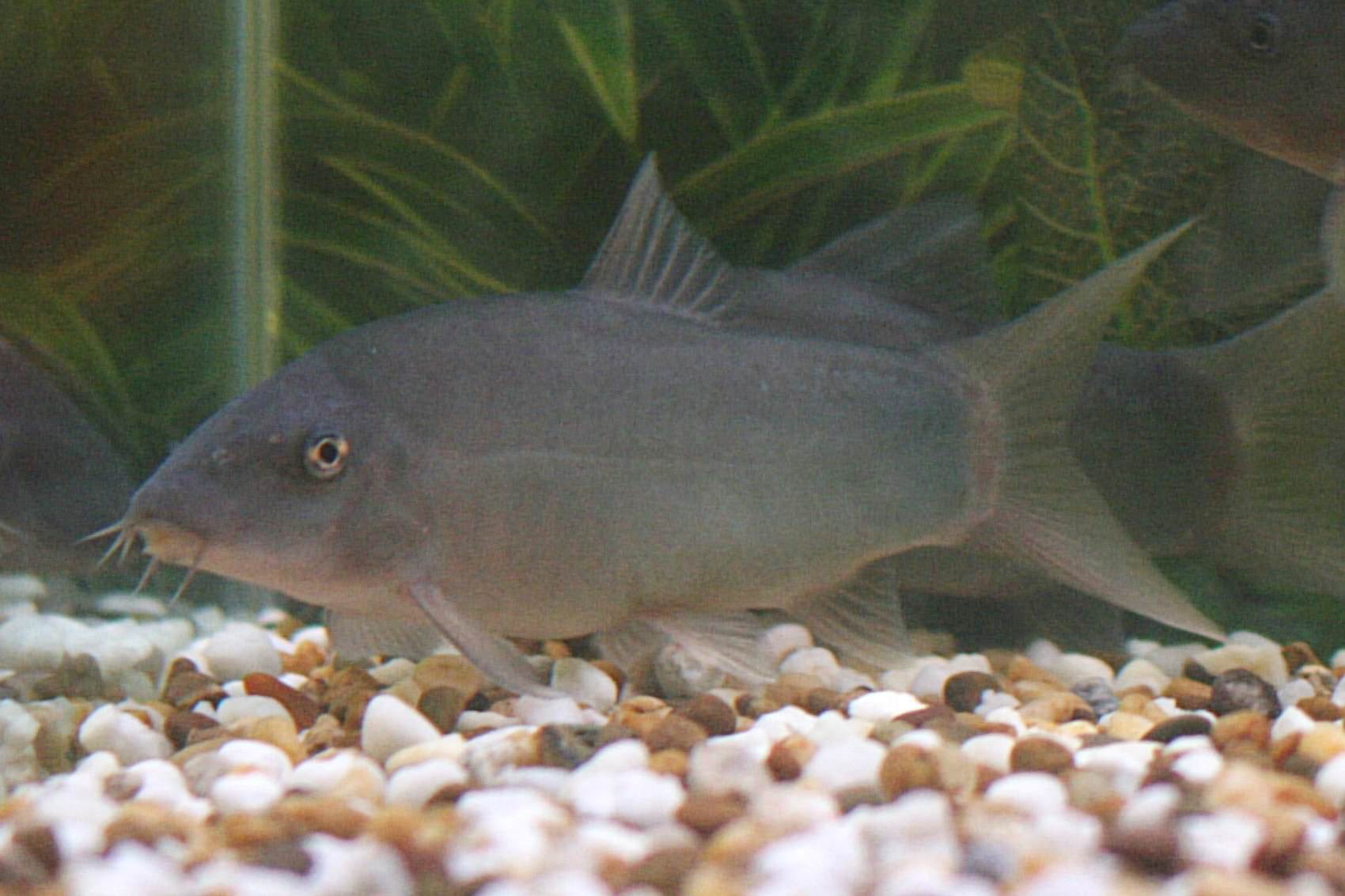
The Redtail Loach is a small but stunning freshwater fish that is native to parts of Southeast Asia.
As their name suggests, the most noticeable feature on these fish is their tail. The tail is a beautiful crimson red that really stands out against their dark brown/black bodies.
The rest of the tail is a little more standard, with a forked caudal fin that is symmetrical on the top and bottom. Their dorsal and anal fins are both rather short and begin about two-thirds of the way back on the body of the fish.
Both of these fins are translucent and have a bit of a ragged look to them. The ventral fins are thin and begin a third of the way down their bodies.
Redtail Loaches have a lumpy “chin” area that leads right into their ventral fins. The eyes on these fish are quite small and close together.
Lifespan
The lifespan of a Redtail Loach in captivity is typically 5 – 10 years, although some have been known to live up to 20 years. The average lifespan in the wild is unknown.
Size
The average adult Redtail Loach size is between 4 and 6 inches, with some individuals reaching up to 8 inches in length. These bottom-dwellers are relatively slender, so they don’t require a lot of width in their aquarium.
Tank
Tank Size
The recommended tank size for Redtail loaches is at least 55 gallons. If you want to keep more than one fish, you should add an additional 20 gallons for each fish. This is assuming you want to keep them in a school, which is recommended.
Redtail loaches are a semi-aggressive species of fish, so they may not do well in a community tank with smaller fish. If you want to keep them with other fish, make sure they are of a similar size.
Water Parameters
The Redtail Loach is a semi-aggressive freshwater fish that is native to the rivers of Southeast Asia.
This fish prefers to live in water that has a temperature of 72 to 79 degrees Fahrenheit, a pH level of 6.0 to 8.0, and a water hardness of 5 to 19 dGH.
It is important to maintain these water parameters in order to keep your fish healthy and happy.
What To Put In Their Tank
If you want to keep redtail loaches, you need to provide them with a habitat that includes some specific elements.
For starters, you need to have a sandy substrate in their tank. This will protect their sensitive underbellies from getting scraped up on anything sharp.
You also need to provide them with plenty of hiding places. These fish are shy by nature and need to feel secure in their environment. Driftwood, rocks, and caves are all great choices. Just make sure that whatever you use can’t fall over and crush them!
Redtail loaches also love to eat algae, so live plants might not be the best choice for their tank. If you must have plants, go with something that’s fast-growing and can withstand a little nibbling (hornwort or water wisteria are good options).
Common Diseases
Redtail loaches are a pretty hearty fish, but that doesn’t mean they can’t get sick. In fact, there are a few diseases that these fish are particularly susceptible to.
The most common disease that affects redtail loaches is ich. This is a pretty common freshwater disease that is caused by a parasite.
It manifests as white spots on the fish’s body and is usually accompanied by heavy scratching. If you notice this, it’s important to take action immediately.
The second most common disease is bacterial infection. This can happen if the fish are kept in poor water conditions or if they have an open wound.
The most common symptom of this is red or inflamed skin. If you see this, it’s important to take your fish to the vet as soon as possible.
Bacterial infections can be quite serious and even deadly if they’re not treated quickly.
Of course, the best way to prevent these diseases is to simply take good care of your fish. Maintain the quality of the water in their tank and don’t overstress them and you should be fine.
Behavior & Temperament
The Redtail loach is a peaceful and social fish that does best in groups. They are shy fish that will often hide when first introduced to a new tank. Once they feel comfortable, they will become more active and socialize more with their tank mates.
These fish are bottom-dwellers and prefer to stay near the substrate where they can sift through the gravel for food. They are not aggressive eaters and will not compete for food with other fish.
Redtail loaches are shy fish that will often hide when first introduced to a new tank.
Redtail loaches are not aggressive and get along well with other peaceful fish. They may be bullied by more aggressive fish, so it is best to keep them with fish that are similar in size and temperament.
Tank Mates
The redtail loach is a peaceful, calm fish that does well in community tanks. These bottom-dwellers are shy and should be kept in groups of at least 3-5 fish. They are also sensitive to water conditions and should be kept in a well-filtered tank with a sandy substrate.
When choosing tank mates for redtail loaches, it’s important to consider compatibility in terms of both personality and water conditions.
Some compatible fish include:
- Guppies
- Platies
- Mollies
- Swordtails
- Neon Tetras
- Corydoras Catfish
- Otocinclus Catfish
- Bristlenose Pleco
Breeding
The Redtail loach is a beautiful and popular fish that is native to the rivers of Southeast Asia. They are relatively easy to care for but are not often bred in captivity.
The first step in breeding Redtail loaches is to identify the sexes. This can be difficult since they look very similar. The best way to tell is by looking at the fins. Males have longer and wider fins than females.
Once you have a group of fish that you want to breed, the next step is to set up a breeding tank. The tank should be at least 30 gallons and should have a lot of hiding places.
Redtail loaches like to lay their eggs on plants, so make sure to include some live plants in the tank. You can also use artificial plants as long as they are safe for the fish.
The water should be soft and slightly acidic. The temperature should be between 74 and 80 degrees Fahrenheit.
When the tank is set up, the fish will need to be conditioned. This means that you will need to feed them live foods for a few weeks. This will help to improve their health and increase the chances of spawning.
When the fish are ready, they will spawn in the morning. The female will lay her eggs on a plant leaf and the male will fertilize them. The eggs will hatch in about 24 hours.
The fry will need to be fed live foods for the first few weeks. After that, they can be fed baby brine shrimp or crushed flake food.
Conclusion
The Redtail Loach is an excellent choice for a beginner fish keeper. They are relatively easy to care for, and they are a beautiful addition to any freshwater tank.
While they are peaceful fish, they can be territorial with their own kind. So, it is important to keep an eye on them if you have more than one Redtail Loach in your tank.
Overall, the Redtail Loach is a great fish for anyone looking for a low-maintenance pet that will add some color and life to their home.

